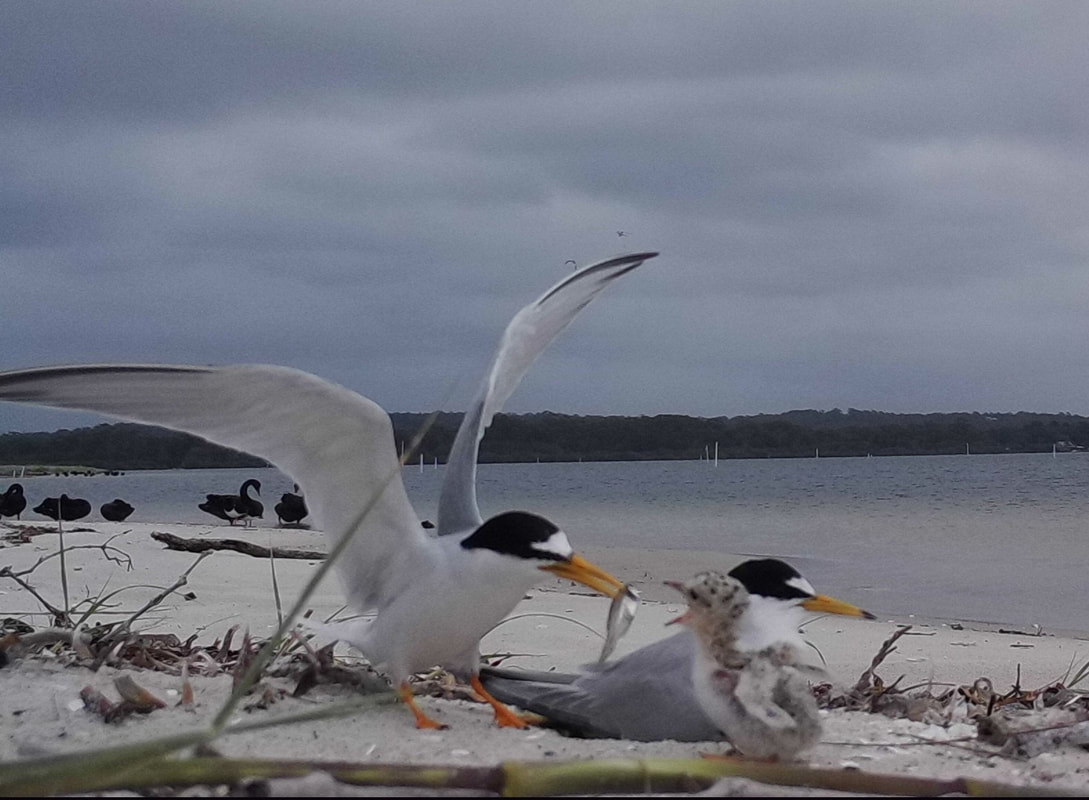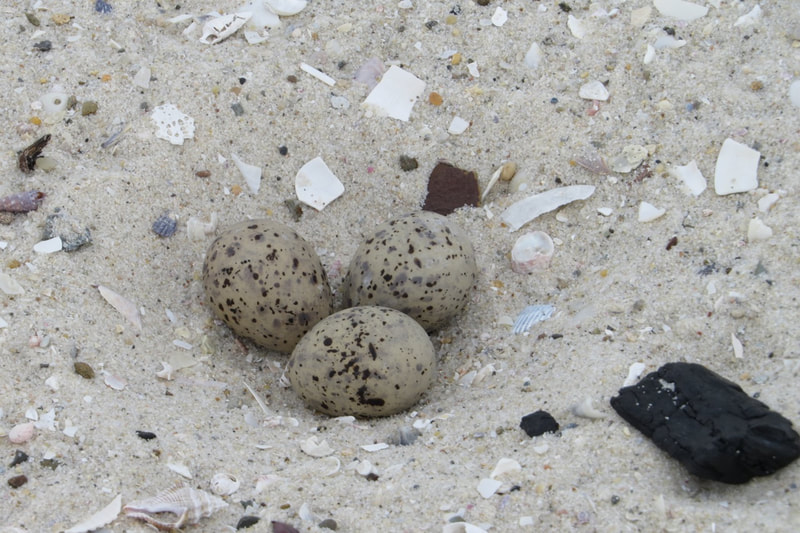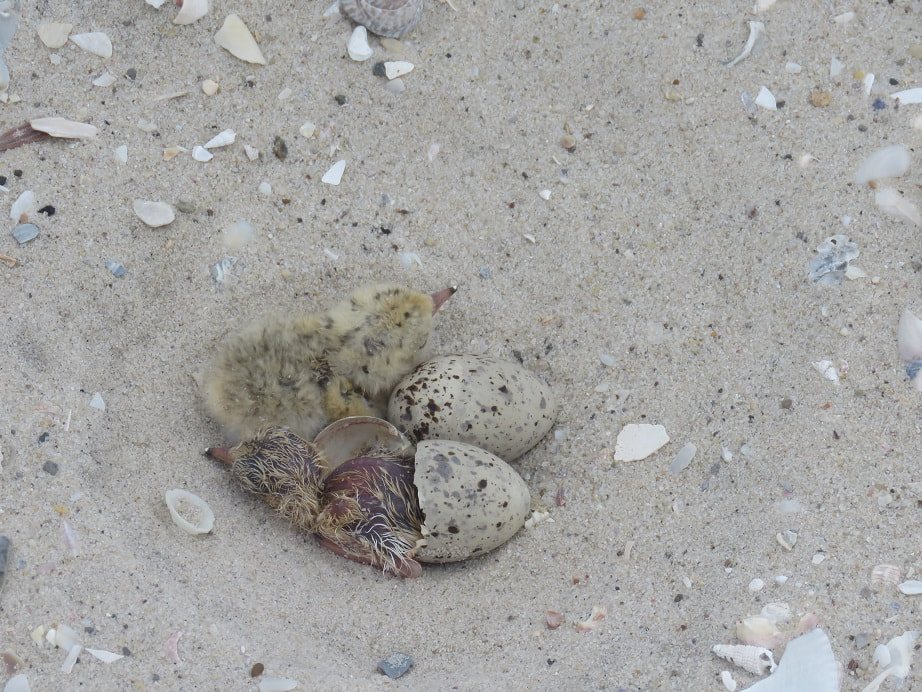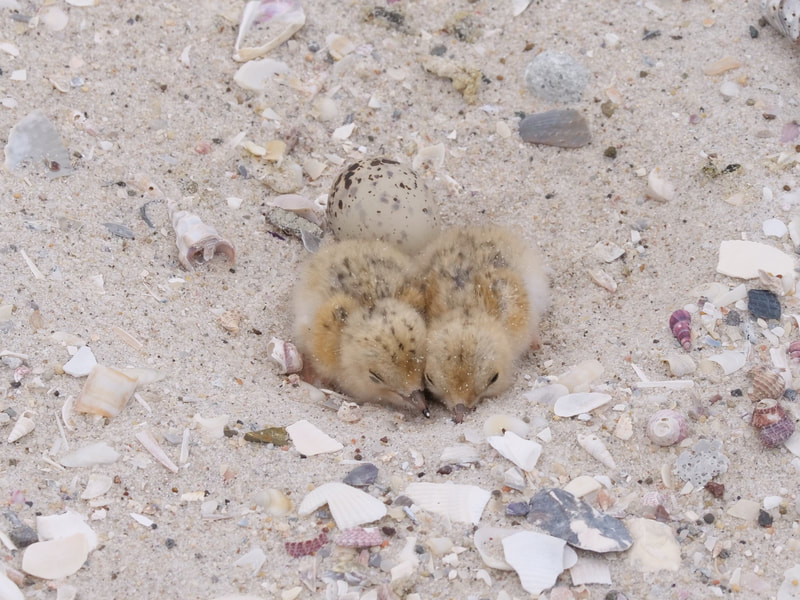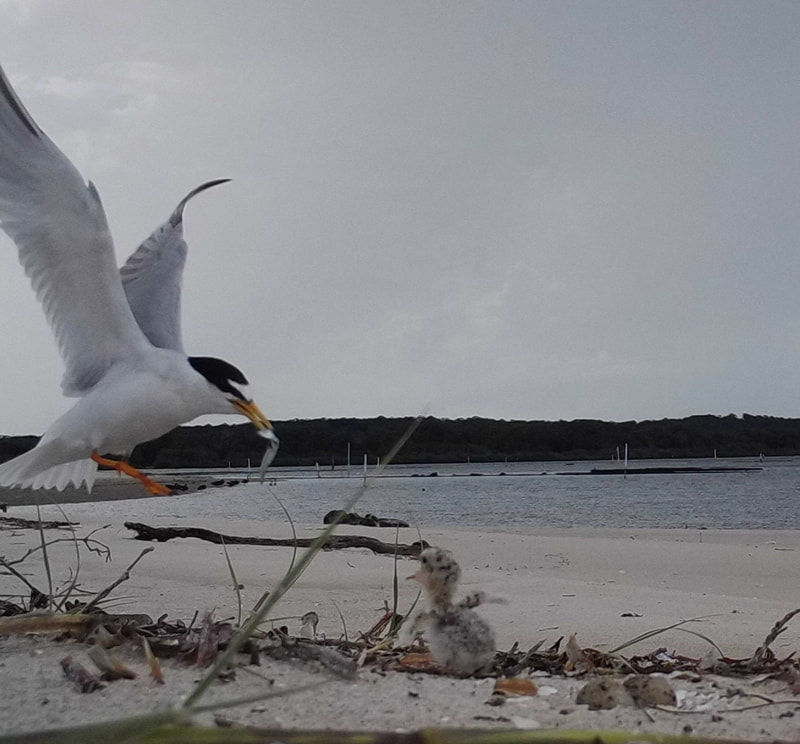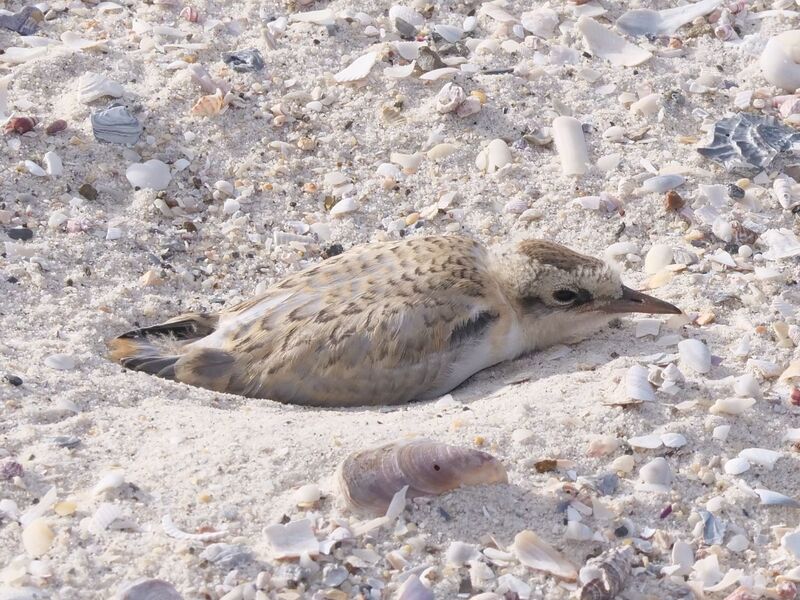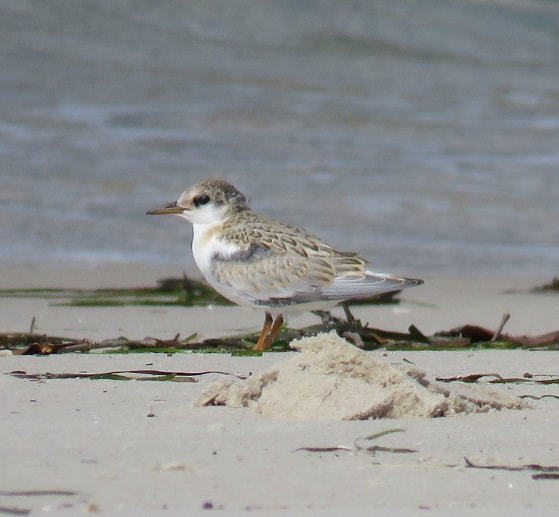Little Tern
Shorebird or Seabird?Little Tern (Sternula albifrons) measuring about 25cm long in their adult state, are the smallest seabird in the subfamily Sterninae (Terns), who are closely related to gulls. They are generally included in the ‘Shorebird’ grouping, but they are not strictly a shorebird! |
|
During breeding the bill changes from black to yellow and a black wedge (a Zoro mask!) appears from the bill to the eye.
The group known as the south-eastern Australian population breeds mostly within NSW, Victoria and Queensland during spring and summer (approximately October to March). These birds either remain within Australia all year or migrate into parts of Asia and Pacific Islands during the non-breeding season (more tracking data required) Their breeding sites can be found along the entire coastal edge of New South Wales where conditions are optimal. These include the Manning Estuary and Winda Woppa and Corrie Island in Port Stephens. Little Tern have a diet of fish (< 10cm long), small crustaceans and insects. They can be seen hovering from 2 to 15m over shallow coastal waters before plunging down to capture their prey. Presenting food to a potential mate is part of the pre-breeding ritual, then continues as each parent takes it in turns to sit on the eggs or catch fish etc. Incubation can take up to 22 days, then the chicks are fed and protected for up to another 3 weeks before they fledge and start learning how to fend for themselves. |
Six weeks intensive parenting time is quite long compared with other bird species. Then if their first clutch of eggs is predated or fail for another reason, the diligent parents will try again up to twice more throughout the season to produce chicks! Along with other Seabird and Shorebird species they help maintain the ecological balance of these areas through their feeding and breeding habits. They are a vital link in the continued functioning of our diverse ecosystems – on which the survival of All Life depends. Little Tern are at risk of extinction in NSW as their preferred nesting sites on beaches and around estuaries are directly on the sand in shallow scrapes, which puts them in easy contact with many threats, mostly associated with introduced pests and human disturbance. In the last twenty years the recorded number of breeding pairs has fallen by more than 40% and the species is now classified as Endangered in NSW. Management of these threats has become an ongoing and increasingly important activity via the NPWS Saving our Species program. References: NSW Local Land Services Threatened Fauna of the Hunter and Mid Coast brochure 2019 Birdlife Australia My Tern pocket guide Neil Fraser Hunter Bird Observers Club |
This series of photos show the typical scrape with eggs, chicks hatching, young chicks in nest, being fed, mature chick and fledglng Photos courtesy of Ann Woods, Sharon Taylor and NPWS field camera
Myall Koala and Environment Group volunteers
have been involved in the monitoring of the Little Tern since the summer of 2017-18 on the western end of Winda Woppa and more recently on Corrie Island. Initially Neil Fraser from Hunter Bird Observers Club(HBOC) called for volunteers to assist him count and collate Little Tern egg, chick and fledgling numbers on the dredged sand spoil at the mouth of the eastern channel (Short Cut) of Myall river.
That year just under 60 breeding pair, many re-laying after losing their eggs or chicks, managed to raise about 29 chicks to fledgling stage. The main predator seen on that site was a lace monitor (goanna) but 'unknown losses' could include larger birds, human disturbance and severe weather. This result is insufficient to keep the species thriving.
Subsequent years have resulted in similar fledgling numbers, from around the same, or fewer adult breeding pairs.
No Little Tern in BP (breeding plumage) were active on Winda Woppa in 2018-19 but they possibly used the SW corner of Corrie Island - difficult to reach, as they were discovered mid season in 2019-20 in that location. NSW National Parks (NPWS) initiated the monitoring that year, and in 2020-21, Local Land Services, Mid Coast Council and the NSW Govt, under the Saving Our Species program have been actively involved on both Winda Woppa and Corrie Island. MKEG volunteers have been keenly assisting with the collecting and uploading of data and photographs into NSW Govt databases. This page created by Trish Blair
Little Tern post season report 2020/21
Little Tern and Shorebird post season report 2021/22
